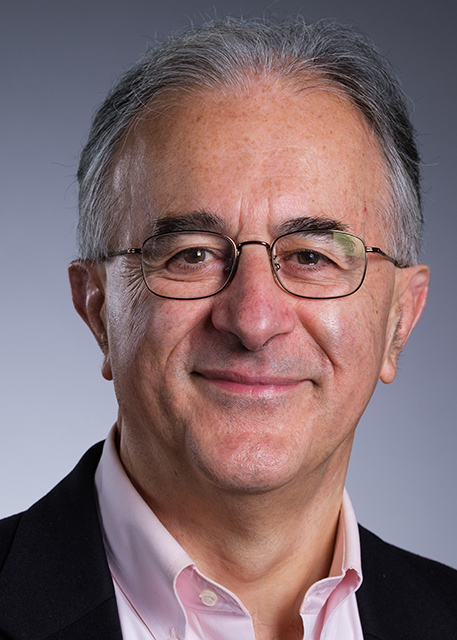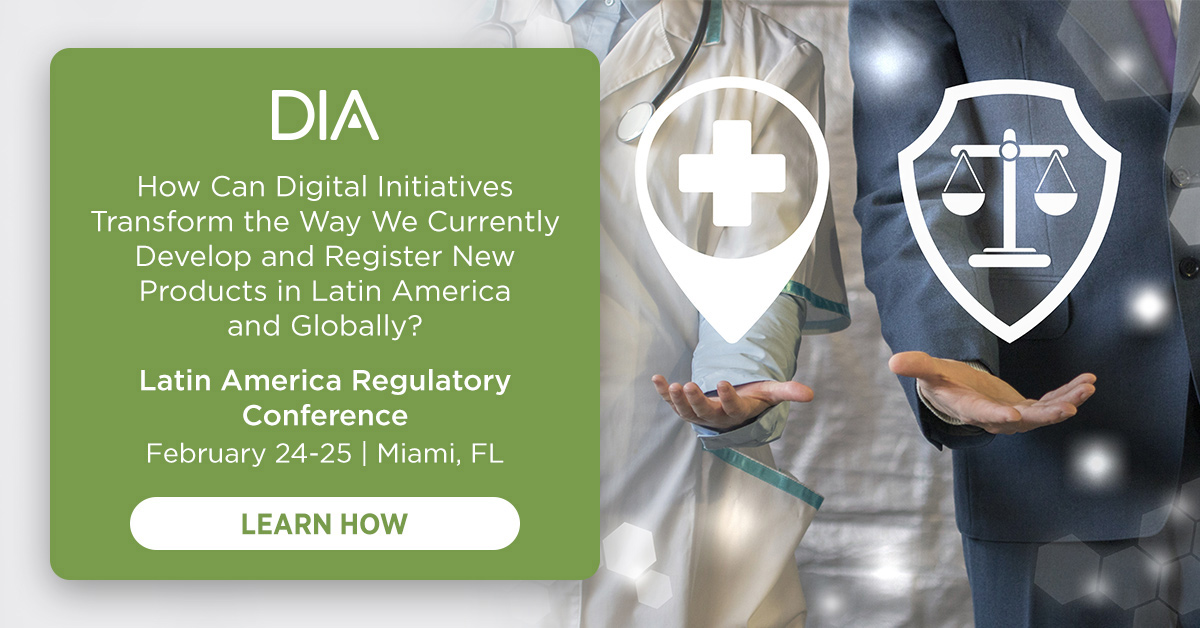January 2020 Global Forum
Table of Contents
AROUND THE GLOBE
COMMUNITY SPOTLIGHT
EXECUTIVE LEADERSHIP
Subscribe
Love Global Forum‘s new online format? Subscribe today and never miss an issue.
Editorial Board
Content stream editors
Gary Kelloff US National Institutes of Health
David Parkinson ESSA Pharma, Inc.
regulatory science
Yoshiaki Uyama Pharmaceuticals and Medical Devices Agency (PMDA)
Adora Ndu BioMarin Pharmaceutical, Inc.
Patient engagement
Deborah Collyar Patient Advocates In Research (PAIR)
Lode Dewulf Servier
Editorial Staff
Alberto Grignolo, Editor-in-Chief Parexel International
Ranjini Prithviraj, Global Associate Director, Content Collaboration DIA Publications
Sandra Blumenrath, Science Writer DIA Publications
Chris M. Slawecki, Senior Digital Copyeditor DIA Publications
Regional Editors
David Mukanga Bill and Melinda Gates Foundation
ASEAN
Silke Vogel Duke-National University of Singapore Medical School
AUSTRALIA/NEW ZEALAND
Richard Day University of New South Wales, Medicine, St. Vincent’s Hospital
CANADA
Judith Glennie JL Glennie Consulting, Inc.
Megan Bettle Health Canada
CHINA
Ling Su Shenyang Pharmaceutical University, Lilly Asia Ventures
Europe
Thomas Kühler Sanofi R&D
INDIA
J. Vijay Venkatraman Oviya MedSafe
JAPAN
Akiko Ikeda Janssen Pharmaceutical K.K.
MIDDLE EAST
Inas Chehimi Novartis
USA
Ebony Dashiell-Aje FDA
Young Professionals Editor
DIA Membership
Bringing together stakeholders for the betterment of global health care.
Executive Leadership

Alberto Grignolo, PhD
Editor-in-Chief
Global Forum
Fellow of DIA
new sound is in the air as we enter the new decade: the sound of minds being pried open to disruptive change.
When the electric guitar was invented in 1931 to help a quiet instrument sound much louder, there was little expectation that it would revolutionize both recorded music and live performances, and indeed pop culture. Today the electric guitar is ubiquitous, powerful, mesmerizing (and often deafening). The electric guitar has taken music and culture to a new level in many different ways, some good and some not so good.
When Photoshop® was created in 1988, film ruled and had not yet been widely replaced by digital photography. The internet and social media did not exist as we know them now. Today this powerful editing technology can add people and objects to photographs, or it can remove them; it can convert beauty to ugliness, or the sublime to the horrific; it can create “realities” that do not actually exist and spread them to billons around the globe in seconds. Photoshop® has taken the visual arts to a new level in many different ways, some good and some not so good.
Top Ten Global Forum Articles and Podcasts
October 2018 through September 2019
Compiled by DIA Staff
ur first Global Forum of 2020 looks back at the ten most popular Global Forum articles and ten most popular podcasts from October 2018 through the end of September 2019. We selected this time period because articles and podcasts published in our October 2019, November 2019, and December 2019 issues have been online for only a few weeks. These issues will be counted in next year’s Top Ten listing.
Thank you for making the items listed below our ten most popular articles and podcasts.
Excuses, Excuses, Excuses: The “LingoBingo” of Patient Engagement
Nexgen Healthcare Communications, UK
mproving patient engagement (PE) is a key endeavour for the pharmaceutical industry. Companies have embarked on a plethora of internal and external silo-breaking activities and partnership-seeking opportunities with patient organisations (POs). There are multiple case studies and examples of “good patient practices” (GPAT) in place. Complementing (or perhaps compounding) this are the regular industry events, publications, and overall publicity about PE. It would be easy to assume that the relationship between most pharma and POs is now a great one — underpinned by trust, measured by collaboration, and linked with a common language. However, inertia still prevails that can frustrate and undermine the success of longer-term partnerships in some companies.
![]() Podcasts
Podcasts
he representative body of the innovative, prescription medicines industry in Australia, Medicines Australia is responsible for administering the Medicines Australia Code of Conduct. This self-regulatory system, underpinned by legislation, sets the standard for the ethical promotion and marketing of prescription medicines in Australia. These standards must be adhered to by member companies. Penalties for breaches of the Code of Conduct can be considerable and are increasing in severity year after year. Breaches of the Code and the resultant fines are published on the Medicines Australia website quarterly along with the comprehensive Code of Conduct Annual Report.
Around the Globe
PSI CRO AG, Romania
ust like their counterparts in Western Europe, industry, regulatory, and other stakeholders in Central and Eastern European (CEE) Countries are preparing for implementation of the new EU Clinical Trials Regulation (536/2014) that will replace the current Directive 2001/20/EC (the legal framework for clinical trials in the EU since 2001) as soon as the EU clinical trials portal and database are functionally validated by an independent audit.
In October 2019, DIA EMEA presented in Bucharest (Romania) the first in a planned series of Clinical Trials Information Day conferences to help these CEE Countries prepare to implement the new Clinical Trials Regulation (CTR). This conference brought together representatives of regulatory authorities and ethics committees from Austria, Bulgaria, Italy, Poland, Romania, and Slovakia, and also featured Massimiliano Sara, Scientific Secretary of the Clinical Trial Facilitation Group (CTFG) and Camelia Mihaescu from the EMA.
Around the Globe
Chief Executive Officer
Medical Excellence Japan
Former Chief Executive, PMDA
hat can we do to promote Rational Medicine? In Japan, our universal National Health Insurance (NHI) system has supported Japanese citizens’ healthcare for close to sixty years. The NHI system gives every Japanese citizen the opportunity to pursue the most high-quality and advanced medical care in the world, anywhere and anytime. But when we think about further development of care, we need to resolve various problems in and surrounding the healthcare system in a rational way. Rational Medicine will only be realized when various technologies—including medicine, ethics, regulations, etc.—are applied to rationally work in harmony.
Patients should be placed at the center of promoting Rational Medicine. This ideal will create benefits and trust for future patients (including ourselves) that we could only imagine before now, as we gather all our wisdom in science and ethics in a collaborative movement toward this valued healthcare environment in Japan. No discussion of the unprecedented change that the global clinical trial and drug development industry has undergone over the past decade would be complete without accounting for the regulatory innovation that has correspondingly emerged and spread worldwide.
As Program Chair and former Chief Executive of the Pharmaceuticals & Medical Devices Agency (PMDA), Japan, I captured the essence of current and future challenges in my 16th DIA Japan Annual Meeting 2019 keynote speech.
Around the Globe
Medical Communication Workshop in Japan
GlaxoSmithKline K.K.
MSD K. K.
edical communication activities are designed in cooperation with healthcare professionals, patients, and regulatory authorities to ensure the proper use of a specific medical product by all stakeholders. Many of these activities include creating various documents based on the contents of the Common Technical Document (CTD) and Risk Management Plan (RMP) for shared professional, patient, and regulator use.
However, because various inconsistencies across these materials are widely known, industry and regulatory experts convened in October 2019 at the 2nd DIA Medical Communications Workshop in Japan to promote the proper creation and use of these materials, and to ensure that healthcare professionals receive appropriate communication and information as part of optimal treatment for their patients.
Around the Globe
Madras Medical College
Tamil Nadu Government Multi Super Specialty Hospital
ords and phrases like “Patient Involvement,” “Shared Decision Making,” and “Engagement” are trending in various medical conferences and journals, and most stakeholders seem to consider them to be the next logical steps in informed consent. Non-governmental and other organizations aggressively push them. Clinicians and administrators are forced to believe that these concepts will work Magic in their hospitals, from reducing the attacks of disease to improving patient satisfaction to growing revenues. All looks so rosy and good.
But do we forget a cardinal principle in medicine? A drug can be a “poison in the right dose” and a poison can be “a drug in an incorrect or overdose.” Anything, from water to common salt or sugar, can damage and even kill a patient when more than needed is taken. Even oxygen can cause toxicity. Isn’t it time to discuss the following pertinent questions?
Community Spotlight
GCP-QA Community Creates Tools for ICH E6(R2) for Small- to Medium-Sized Companies
Quality and Compliance
Immune Design
Global Data Management and Statistics
Merck Animal Health
IA’s GCP-QA Community was actively involved in 2018 and 2019 to create tools to support the 2016 revision of ICH E6(R2), the global standard for Good Clinical Practices (GCP) issued by the International Council for Harmonisation (ICH). This Community project followed a previous cross-community DIA Working Group sponsored by the Good Clinical Practices and Quality Assurance (GCP-QA) Community in 2014 and 2015 to solicit comments and concepts from sponsors and CROs for the ICH E6 revision submitted through the European Medicines Agency (EMA).








